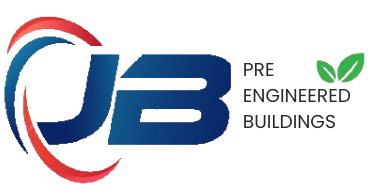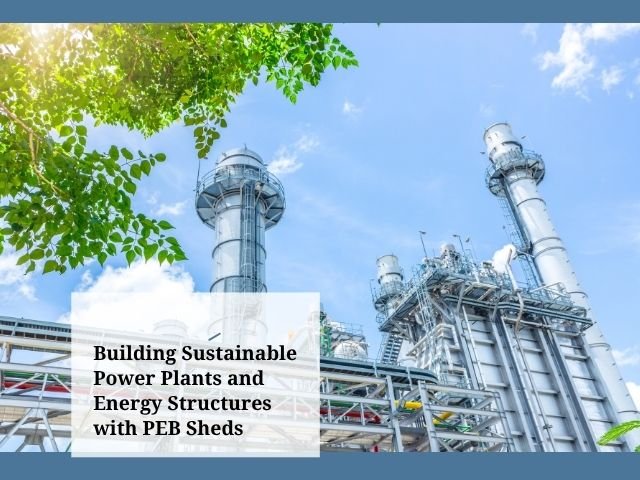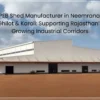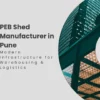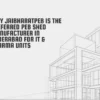Building Sustainable Power Plants with PEB Sheds
Building sustainable power plants with PEB sheds offers eco-friendly, cost-effective, and durable solutions for modern energy needs. These pre-engineered buildings streamline construction, reduce environmental impact, and support renewable energy infrastructure.
Introduction: Powering the Future with Sustainability
Imagine a world where clean energy powers every home, and the structures housing that energy are built faster, cheaper, and greener. That’s the promise of building sustainable power plants with PEB sheds. Pre-engineered building (PEB) sheds are revolutionizing how we construct energy infrastructure, from solar farms to wind turbine facilities. These modular, customizable structures are not only durable but also align with the global push for sustainability. Why does this matter? Because the energy sector is at a tipping point, with 80% of global energy still coming from fossil fuels, according to the International Energy Agency (IEA). PEB sheds offer a way to build smarter, greener, and faster—meeting the urgent need for renewable energy solutions.
In this guide, we’ll explore how building sustainable power plants and energy structures with PEB sheds transforms the industry, saves costs, and supports a cleaner planet. Let’s dive into why PEB sheds are the future of energy infrastructure.
What Are PEB Sheds and Why Do They Matter?
Pre-engineered building (PEB) sheds are prefabricated structures designed off-site, manufactured in factories, and assembled quickly at the construction site. Unlike traditional construction, which can take months or years, PEB sheds streamline the process, cutting both time and costs. For building sustainable power plants, PEB sheds are game-changers because they’re versatile, durable, and eco-friendly.
- Speed: PEB sheds can be erected 50% faster than conventional buildings, per industry studies.
- Cost: They reduce labor and material costs by up to 30%.
- Sustainability: Made with recyclable materials, PEB sheds minimize waste.
These benefits make PEB sheds ideal for energy projects, from housing solar panels to protecting wind turbine components.
How PEB Sheds Support Sustainable Energy Goals
Sustainability is at the heart of modern energy production. Building sustainable power plants and energy structures with PEB sheds aligns with global goals like reducing carbon emissions and achieving net-zero by 2050. Here’s how:
- Lower Carbon Footprint: PEB sheds use less concrete and steel, reducing emissions during production.
- Energy Efficiency: Their designs often include insulation and natural lighting, cutting energy use in operations.
- Adaptability: PEB sheds can be tailored for solar, wind, or hydroelectric facilities, supporting diverse renewable energy sources.
For example, a solar farm in California used PEB sheds to house control rooms, cutting construction time by 40% and emissions by 25% compared to traditional methods.
Why Choose PEB Sheds for Power Plant Construction?
When it comes to building sustainable power plants with PEB sheds, the advantages stack up. These structures are engineered for efficiency, durability, and environmental benefits. Here’s why they’re a top choice:
- Modular Design: PEB sheds can be customized to fit specific equipment, like inverters or transformers.
- Weather Resistance: Built to withstand extreme conditions, they protect sensitive energy equipment.
- Scalability: Need to expand? PEB sheds can be easily modified or extended.
A wind farm in Texas, for instance, used PEB sheds to create maintenance hubs, saving $500,000 in construction costs and completing the project in just three months.
The Role of PEB Sheds in Renewable Energy Projects
Renewable energy projects, like solar farms or wind turbines, require infrastructure that’s both reliable and eco-conscious. Building sustainable energy structures with PEB sheds ensures projects meet these demands. For example:
- Solar Farms: PEB sheds house inverters and control systems, protecting them from harsh weather.
- Wind Farms: They provide storage for turbine components and maintenance tools.
- Hydro Plants: PEB sheds can be built on challenging terrains, supporting remote energy sites.
By using recyclable materials and energy-efficient designs, PEB sheds help renewable projects meet strict environmental regulations.
How PEB Sheds Reduce Construction Costs
Cost is a major factor in energy infrastructure projects. Building sustainable power plants with PEB sheds slashes expenses without compromising quality. Here’s how:
- Less Material Waste: Factory production ensures precise measurements, reducing scrap.
- Faster Assembly: Pre-made components mean less time on-site, lowering labor costs.
- Long-Term Savings: Durable materials reduce maintenance needs over time.
A 2023 study by the National Renewable Energy Laboratory found that PEB sheds cut construction costs for energy projects by 20–30% compared to traditional buildings.
Are PEB Sheds Environmentally Friendly?
Yes, PEB sheds are a green choice for building sustainable energy structures with PEB sheds. Their eco-friendly features include:
- Recyclable Materials: Most PEB sheds use steel and other materials that can be reused.
- Low Waste: Precision manufacturing minimizes excess materials.
- Energy-Saving Designs: Options like reflective roofing reduce cooling needs.
For example, a biomass plant in India used PEB sheds with solar-reflective coatings, cutting energy consumption by 15% annually.
Can PEB Sheds Be Customized for Energy Projects?
Absolutely. Customization is a key strength of building sustainable power plants with PEB sheds. Manufacturers can tailor:
- Size and Layout: To fit specific equipment or site requirements.
- Insulation: For temperature control in extreme climates.
- Aesthetics: To blend with local environments or meet branding needs.
A geothermal plant in Iceland used custom PEB sheds to house control units, designed to withstand volcanic ash and extreme cold.
How Do PEB Sheds Compare to Traditional Construction?
When deciding on building sustainable energy structures with PEB sheds, it’s worth comparing them to traditional methods:
| Feature | PEB Sheds | Traditional Construction |
|---|---|---|
| Construction Time | 2–6 months | 6–18 months |
| Cost | 20–30% cheaper | Higher due to labor/materials |
| Sustainability | Recyclable, low waste | High waste, more emissions |
| Durability | High (steel-based) | Varies by materials |
PEB sheds clearly win for speed, cost, and eco-friendliness, making them ideal for modern energy projects.
Challenges of Using PEB Sheds in Power Plants
While PEB sheds are highly effective, there are challenges to consider when building sustainable power plants and energy structures with PEB sheds:
- Initial Investment: Upfront costs for custom designs can be high, though long-term savings offset this.
- Site Limitations: Remote or uneven terrains may require extra engineering.
- Perception: Some developers view PEB sheds as less “prestigious” than traditional buildings.
However, these challenges are often outweighed by the benefits, especially as technology improves.
Future Trends in PEB Sheds for Energy Infrastructure
The future of building sustainable power plants with PEB sheds is bright. Emerging trends include:
- Smart Sheds: Integration with IoT for real-time energy monitoring.
- 3D Printing: Advanced manufacturing for even faster production.
- Green Certifications: More PEB sheds meeting LEED or BREEAM standards.
By 2030, the global PEB market is expected to grow by 12% annually, driven by demand for sustainable energy infrastructure, per a MarketsandMarkets report.
Building Sustainable Power Plants with PEB Sheds – Frequently Asked Questions
What are PEB sheds used for in power plants?
PEB sheds house critical equipment like inverters, transformers, and control systems. They’re ideal for building sustainable power plants with PEB sheds due to their durability and quick assembly. Learn more about their role.
Are PEB sheds cost-effective for energy projects?
Yes, they reduce construction costs by 20–30% compared to traditional methods, thanks to faster assembly and less waste. See cost details.
Can PEB sheds withstand extreme weather?
PEB sheds are engineered for durability, resisting wind, rain, and extreme temperatures, making them perfect for building sustainable energy structures with PEB sheds. Read about durability.
How eco-friendly are PEB sheds?
They use recyclable materials, produce less waste, and often include energy-saving features like reflective roofing. Explore their sustainability.
Can PEB sheds be customized for specific energy needs?
Yes, they can be tailored for size, insulation, and layout to suit solar, wind, or hydro projects. Check customization options.
Conclusion: A Smarter Way to Power the Future
Building sustainable power plants with PEB sheds is more than a trend—it’s a practical, eco-friendly solution for the energy sector’s future. These structures save time, cut costs, and align with global sustainability goals, making them a top choice for renewable energy projects. Whether you’re planning a solar farm or a wind turbine facility, PEB sheds offer the flexibility and durability needed to succeed. Have you explored PEB sheds for your energy project? Share your thoughts or check out our guides on renewable energy trends or cost-saving construction tips.
